Jun Yu
age ~53
from Pittsburgh, PA
- Also known as:
-
- June Yu
- Yu Jun
- Phone and address:
-
1568 King Charles Dr, Pittsburgh, PA 15237
(412)4224577
Jun Yu Phones & Addresses
- 1568 King Charles Dr, Pittsburgh, PA 15237 • (412)4224577
- Ottawa Hills, OH
- Brooklyn, NY
- New York, NY
- Boca Raton, FL
Medicine Doctors

Jun Jung-San Yu
view sourceSpecialties:
Anesthesiology
Internal Medicine
Cardiovascular Disease
Cardiology
Internal Medicine
Cardiovascular Disease
Cardiology
Education:
National Taiwan University (1967)
Lawyers & Attorneys

Jun Yu - Lawyer
Name / Title
Company / Classification
Phones & Addresses
Principal
Chinatech, LLC
Business Services at Non-Commercial Site
Business Services at Non-Commercial Site
402 Jonquil Ln, Bridgeville, PA 15017
President, Principal
Pennglobal Law Associates, PC
Legal Services Office
Legal Services Office
3000 Mcknight East Dr, Pittsburgh, PA 15237
Principal
Jetta Logistics Corp
Transportation Services
Transportation Services
3620 Parsons Blvd, Flushing, NY 11354
AUTHORIZED SERVICE CENTER INTERNATIONAL INC
113-05 Queens Blvd, Forest Hills, NY 11375
Jun W Yu 113-05 Queens Blvd, Forest Hills, NY 11375
Jun W Yu 113-05 Queens Blvd, Forest Hills, NY 11375
Chief Executive Officer
Authorized Service Centers of America Inc
Repairs & Services Vcr's & Hi-Tech Electronic Equipment
Repairs & Services Vcr's & Hi-Tech Electronic Equipment
11305 Queens Blvd, Flushing, NY 11375
(718)5449584
(718)5449584
President, Director
ULTRA POWER TRADING, LLC
Whol Nondurable Goods
Whol Nondurable Goods
1677 Madison St STE 2L, Ridgewood, NY 11385
9913 S Post Oak, Houston, TX 77096
9913 S Post Oak, Houston, TX 77096
Us Patents
-
Memory Array Having A Layer With Electrical Conductivity Anisotropy
view source -
US Patent:7026676, Apr 11, 2006
-
Filed:Jun 29, 2004
-
Appl. No.:10/879670
-
Inventors:Joachim Walter Ahner - Pittsburgh PA, US
Jun Yu - Pittsburgh PA, US
Dieter Klaus Weller - Gibsonia PA, US -
Assignee:Seagate Technology LLC - Scotts Valley CA
-
International Classification:H01L 29/76
-
US Classification:257295, 257532, 257296, 257255, 257301, 257623, 365151, 365117
-
Abstract:A memory array includes a memory layer that has hysteretic domains with domain axes extending between first and second memory layer surfaces. A conductive layer on the first memory layer surface has anisotropically increased electrical conductivity in a thickness direction. A movable conductive probe has a contact area on the conductive layer and moves to access a selected hysteretic domain.
-
Large-Scale Uv-C Inactivation Devices And Simulations Of The Same
view source -
US Patent:20220331472, Oct 20, 2022
-
Filed:Mar 29, 2021
-
Appl. No.:17/215431
-
Inventors:- Cheswick PA, US
Andrew Veter - Pittsburgh PA, US
Keith Huthmacher - Pittsburgh PA, US
Peter Gilgunn - Pittsburgh PA, US
James Nelson - Rillton PA, US
David Malarik - Worthington PA, US
Jun Yu - Pittsburgh PA, US -
International Classification:A61L 9/20
-
Abstract:An UV-C device may include several UV-C light sources (e.g., UV-C LEDs) and such UV-C LEDs may have UV-C reflecting structures arranged to direct UV-C in a particular direction and at a particular size and shape. Doing so may, for example, increase the UV-C in a particular direction or working area. A UV-C generating device may be utilized in an air stream, such as an air duct, to sterilize air from that air stream. Multiple UV-C inactivation devices may be coupled in series and placed into a single housing for in order to increase the efficacy of the UV-C inactivation device. The inlet of the device may draw air using an inlet module attachment (e.g., a hood with one or more than one inlet hood) and may output air using an outlet module attachment (e.g., a duct to deliver air to an outflow air duct). Computational fluid dynamic software may be provided where UV-C inactivation devices may be positioned (e.g., manually or autonomously by an adaptive algorithm) to determine impact on airflow against various pathogens (e.g., and/or SARS-CoV-2).
-
Uv-C Virus Inactivation Devices And Supressing Sound And Operating The Same
view source -
US Patent:20210299303, Sep 30, 2021
-
Filed:Mar 29, 2021
-
Appl. No.:17/215402
-
Inventors:- Cheswick PA, US
Andrew Veter - Pittsburgh PA, US
Keith Huthmacher - Pittsburgh PA, US
Peter Gilgunn - Pittsburgh PA, US
James Nelson - Rillton PA, US
David Malarik - Worthington PA, US
Jun Yu - Pittsburgh PA, US -
International Classification:A61L 2/10
F24F 13/20
F24F 8/22 -
Abstract:An UV-C device may include several UV-C light sources (e.g., UV-C LEDs) and such UV-C LEDs may have UV-C reflecting structures arranged to direct UV-C in a particular direction and at a particular size and shape. Doing so may, for example, increase the UV-C in a particular direction or working area. A UV-C generating device may be utilized in an air stream, such as an air duct, to sterilize air from that air stream. Sound suppression compartments may be placed around a UV-C generating device inlet and/or a device outlet to reduce sound from the UV-C generating device. Human perceivable (e.g., audible, tactile, and/or visual) notifications may be utilized to provide notification of different modes of operation and/or different efficacy levels (e.g., percent ranges of inactivation of a particular or multiple particular viruses, bacteria, spores, etc.
-
Systems And Methods For Efficient Air Sterilization Without Circulation Unsanitized Air
view source -
US Patent:20210299317, Sep 30, 2021
-
Filed:Mar 29, 2021
-
Appl. No.:17/215367
-
Inventors:- Cheswick PA, US
Andrew Veter - Pittsburgh PA, US
Keith Huthmacher - Pittsburgh PA, US
Peter Gilgunn - Pittsburgh PA, US
James Nelson - Rillton PA, US
David Malarik - Worthington PA, US
Jun Yu - Pittsburgh PA, US -
International Classification:A61L 9/20
-
Abstract:An air sanitization device is provided where a UV-C generator applied UV-C to infected air for sterilization and then the sterilized air is used to cool heat sinks attached to the UV-C. One or more fans can be utilized to push and/or pull air through the device. For example, the fans may create airflow in the device above, for example 200 liters per minute or above 400 liters per minute. Accordingly, a closed air system with a fan may push air through a UV-C generation device to sanitize air and the sanitized air may be pushed over a heat sink attached to the UV-C generation device and then pushed out of the closed air system into the environment. Thus, sanitized air may be circulated by the fan while being air cooled in a manner that does not circulate contaminated air.
-
Increasing Efficiency Of Uv-C Inactivation Devices
view source -
US Patent:20210299318, Sep 30, 2021
-
Filed:Mar 29, 2021
-
Appl. No.:17/215414
-
Inventors:- Cheswick PA, US
Andrew Veter - Pittsburgh PA, US
Keith Huthmacher - Pittsburgh PA, US
Peter Gilgunn - Pittsburgh PA, US
James Nelson - Rillton PA, US
David Malarik - Worthington PA, US
Jun Yu - Pittsburgh PA, US -
International Classification:A61L 9/20
A61L 2/10
A61L 2/24 -
Abstract:An UV-C device may include several UV-C light sources (e.g., UV-C LEDs) and such UV-C LEDs may have UV-C reflecting structures arranged to direct UV-C in a particular direction and at a particular size and shape. Doing so may, for example, increase the UV-C in a particular direction or working area. A UV-C generating device may be utilized in an air stream, such as an air duct, to sterilize air from that air stream. Air may be pushed out of an annulus at the end of an air inactivation device and an annulus outlet cone may be provided in the middle of the annulus to assist, for example, inactivated air in moving smoothly away from the device and reduce pressure at the annulus exit. A UV-C inactivation tube may have UV-C reflective structures at each end to permit air to flow through the tube while reflecting UV-C light back into the tube.
-
Dynamic Magnetic Stripe Communications Device For Cards And Devices
view source -
US Patent:20180232612, Aug 16, 2018
-
Filed:Sep 20, 2017
-
Appl. No.:15/709819
-
Inventors:- Cheswick PA, US
Jun Yu - Pittsburgh PA, US
Allen D. Bowers - Aspenwall PA, US -
International Classification:G06K 19/06
-
Abstract:A device, such as a flexible card, may include a dynamic magnetic stripe emulator operable to transmit magnetic stripe information, a first magnet adjacent to a first side of the dynamic magnetic stripe emulator, and a second magnet adjacent to a second side of the dynamic magnetic stripe emulator.
Resumes

Attorney At Eckert Seamans
view sourcePosition:
Attorney at Eckert Seamans
Location:
Greater Pittsburgh Area
Industry:
Law Practice
Work:
Eckert Seamans since Oct 2009
Attorney
Meyer Unkovic & Scott Jun 2006 - Oct 2009
Attorney
Attorney
Meyer Unkovic & Scott Jun 2006 - Oct 2009
Attorney

Attorney At Meyer, Unkovic & Scott Llp
view sourceLocation:
Greater Pittsburgh Area
Industry:
Legal Services

Attorney
view sourceLocation:
Pittsburgh, PA
Industry:
Law Practice
Work:
Meyer, Unkovic & Scott Llp Jun 2006 - Oct 2009
Attorney
Eckert Seamans Jun 2006 - Oct 2009
Attorney
Attorney
Eckert Seamans Jun 2006 - Oct 2009
Attorney

President At Pennglobal Law Associates, P.c
view sourceLocation:
402 Jonquil Ln, Bridgeville, PA 15017
Industry:
Legal Services
Work:
Eckert Seamans 2009 - 2011
Member
Fort Pitt Group 2009 - 2011
General Counsel
Pennglobal Law Associates P.c 2009 - 2011
President at Pennglobal Law Associates, P.c
Usfor Energy 2009 - 2011
Chief Executive Officer
Meyer, Unkovic & Scott Llp 2006 - 2009
Member
Member
Fort Pitt Group 2009 - 2011
General Counsel
Pennglobal Law Associates P.c 2009 - 2011
President at Pennglobal Law Associates, P.c
Usfor Energy 2009 - 2011
Chief Executive Officer
Meyer, Unkovic & Scott Llp 2006 - 2009
Member
Education:
Wayne State University Law School 1994 - 1997
Doctor of Jurisprudence, Doctorates, Law University of Chicago 1979 - 1981
Masters, Philosophy Dickinson College 1975 - 1979
Bachelors, Anthropology, Biology
Doctor of Jurisprudence, Doctorates, Law University of Chicago 1979 - 1981
Masters, Philosophy Dickinson College 1975 - 1979
Bachelors, Anthropology, Biology
Skills:
Corporate Law
Mergers
Due Diligence
Contract Negotiation
Licensing
Start Ups
Strategic Planning
Corporate Governance
Business Strategy
Private Equity
Joint Ventures
Litigation
Commercial Litigation
Mediation
Intellectual Property
Legal Writing
Civil Litigation
Real Estate
Mergers and Acquisitions
Appeals
Venture Capital
Legal Research
Product Liability
Employment Law
Arbitration
Bankruptcy
Trade Secrets
Trials
Litigation Support
Patents
Alternative Dispute Resolution
Trademarks
Dispute Resolution
Legal Assistance
Personal Injury
Family Law
Legal Advice
Estate Planning
Securities Regulation
Courts
Criminal Law
Document Review
Business Litigation
Mergers
Due Diligence
Contract Negotiation
Licensing
Start Ups
Strategic Planning
Corporate Governance
Business Strategy
Private Equity
Joint Ventures
Litigation
Commercial Litigation
Mediation
Intellectual Property
Legal Writing
Civil Litigation
Real Estate
Mergers and Acquisitions
Appeals
Venture Capital
Legal Research
Product Liability
Employment Law
Arbitration
Bankruptcy
Trade Secrets
Trials
Litigation Support
Patents
Alternative Dispute Resolution
Trademarks
Dispute Resolution
Legal Assistance
Personal Injury
Family Law
Legal Advice
Estate Planning
Securities Regulation
Courts
Criminal Law
Document Review
Business Litigation

Jun Yu
view sourceLocation:
Toledo, OH
Industry:
Environmental Services
Work:
Pittsburgh Parks Conservancy 2006 - 2006
Internship
Slippery Rock University 2004 - 2005
Research Assistant
Internship
Slippery Rock University 2004 - 2005
Research Assistant
Education:
Slippery Rock University of Pennsylvania 2004 - 2006
Master of Science, Masters Mohawk College
Master of Science, Masters Mohawk College
Skills:
Water Monitoring and Sampling
Water and Wastewater Treatment
Aquatic Ecology
Jmp
Gis
Microsoft Office
Autocad
Project Management
Invasive Species
Research
Wetlands
Water and Wastewater Treatment
Aquatic Ecology
Jmp
Gis
Microsoft Office
Autocad
Project Management
Invasive Species
Research
Wetlands

Senior Magnetics Engineer
view sourceLocation:
Pittsburgh, PA
Industry:
Consumer Electronics
Work:
Dynamics Inc.
Senior Magnetics Engineer
Dynamics Inc. Mar 2011 - Mar 2012
Magnetics Engineer
Michigan State University Aug 2004 - Aug 2005
Post Doctoral Researcher
Seagate Technology May 2002 - Jun 2004
Post Doctoral Researcher
University of New Orleans & Seagate Technology Sep 2000 - May 2002
Senior Research Specialist
Senior Magnetics Engineer
Dynamics Inc. Mar 2011 - Mar 2012
Magnetics Engineer
Michigan State University Aug 2004 - Aug 2005
Post Doctoral Researcher
Seagate Technology May 2002 - Jun 2004
Post Doctoral Researcher
University of New Orleans & Seagate Technology Sep 2000 - May 2002
Senior Research Specialist
Education:
New York University 1994 - 2000
Fudan University 1989 - 1994
Bachelors, Bachelor of Science, Physics
Fudan University 1989 - 1994
Bachelors, Bachelor of Science, Physics
Skills:
Thin Films
Magnetics
Characterization
Matlab
Sem
Finite Element Analysis
Physics
Afm
Design of Experiments
Materials Science
R&D
Product Development
Spm
Nanotechnology
Simulations
Semiconductors
C++
Magnetics
Characterization
Matlab
Sem
Finite Element Analysis
Physics
Afm
Design of Experiments
Materials Science
R&D
Product Development
Spm
Nanotechnology
Simulations
Semiconductors
C++

Jun Yu
view source
Jun Yu
view sourceYoutube
Plaxo

jun yu
view sourceFo Shan city,GuangDong province,China
Flickr

Jun Young Yu
view source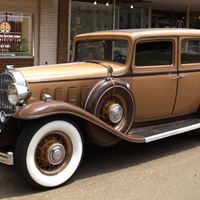
Jun Yu
view source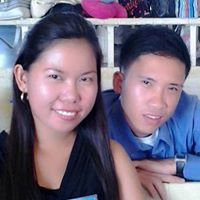
Jun Carlo Yu
view source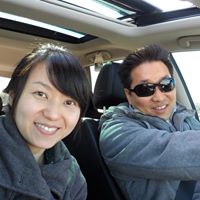
Jun Myoung Yu
view source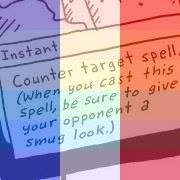
Jun Jun Halflife Yu
view source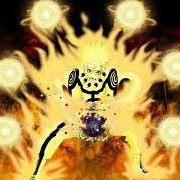
Jun Sang Yu
view source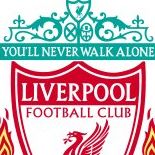
Chin Jun Yu
view source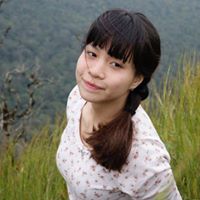
Jun Yu Xiang Jiang
view sourceGoogleplus
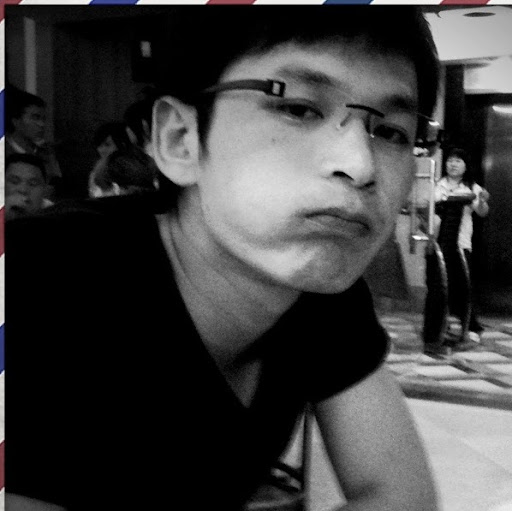
Jun Yu
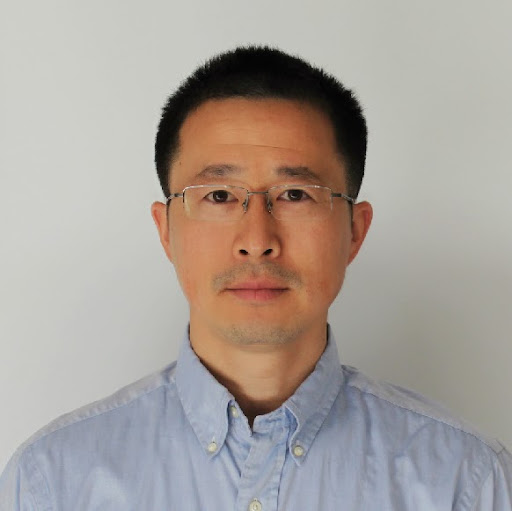
Jun Yu
Education:
Marquette University - Computer science
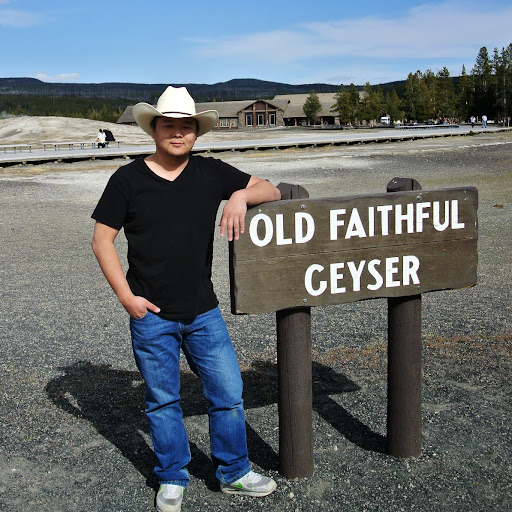
Jun Yu
Education:
Michigan State University

Jun Yu

Jun Yu

Jun Yu

Jun Yu
About:
关注移动互联网,电子...
Bragging Rights:
无业游民。。。呵呵
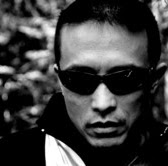
Jun Yu
Classmates

Jun John (Yu)
view sourceSchools:
International School Beijing China 1983-1987

Jun Yu | Richard Montgome...
view source
James Madison Elementary ...
view sourceGraduates:
Jun Yu (1993-1995),
Scott Bush (1976-1982),
Diana Cantu (1985-1986),
Sandi Foss (1956-1963),
Eric Benson (1970-1976)
Scott Bush (1976-1982),
Diana Cantu (1985-1986),
Sandi Foss (1956-1963),
Eric Benson (1970-1976)

International School, Bei...
view sourceGraduates:
Nabeel Sami (1989-1993),
Sabrina Patterson (1993-1995),
Jun Yu (1983-1987),
Wei Ni (1984-1988),
Maria Kaste (1995-1999)
Sabrina Patterson (1993-1995),
Jun Yu (1983-1987),
Wei Ni (1984-1988),
Maria Kaste (1995-1999)
Get Report for Jun Yu from Pittsburgh, PA, age ~53
![[2006.12.07] JJ Lin Jun Jie Yu Le Bai Fen Bai (Par... [2006.12.07] JJ Lin Jun Jie Yu Le Bai Fen Bai (Par...](https://i.ytimg.com/vi/nxIIU6s4niM/0.jpg)
![chinese paladin [june rain] by hu ge chinese paladin [june rain] by hu ge](https://i.ytimg.com/vi/cFx4MCAqJyc/0.jpg)











